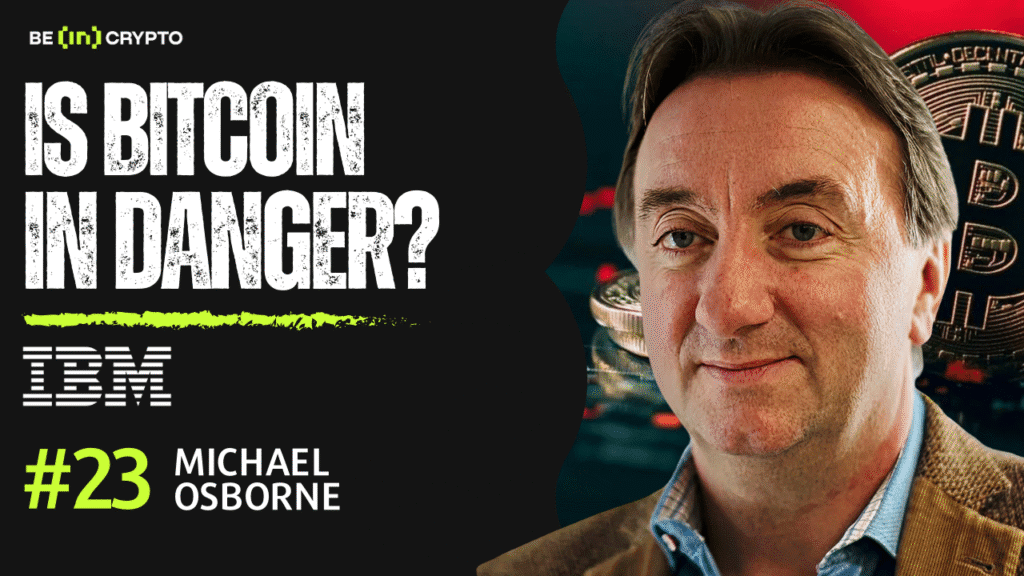The looming threat of quantum computing has sparked a fierce debate in the crypto community. Will a powerful machine one day be able to break Bitcoin encryption and eject wallets?
According to IBM’s Michael Osborne, the answer is not simple, but the clock is ticking.
IBM’s latest quantum advancement
Recently, IBM has released a refreshed roadmap in 2025. We have shown concrete advances towards that Sterling Fault-tolerant quantum system.
Sponsored Sponsors
IBM’s Starling project plans to build a fault-tolerant quantum computer by 2029. Unlike today’s loud experimental machines, Starling is designed to ensure that powerful algorithms are run for a long period of time.
In the case of Bitcoin, this is because the encryption that protects your wallet can ultimately be destroyed by a machine with sufficiently stable qubits. IBM’s roadmap shows steady progress.
The smaller test systems arrive in 2025, 2026 and 2027 before sterling. Each step focuses on making Qubits more reliable and scaling them.
An important breakthrough is a new way to fix an error called QLDPC code. This allows you to use more “logical qubits” from less physical to more usable.
Simply put, you can reduce the size of the machine needed to run dangerous algorithms like Shor and crack the digital signature of Bitcoin.
When IBM achieves its 2029 goals, the gap between quantum attack theory and practice will narrow. This means that the crypto world is much shorter than we plan to upgrade to quantum-safe systems.
Breaking Bitcoin is not a single switch
Osborne, CTO at IBM Quantum Safe, explained that the actual breakthrough relies on logical qubits rather than today’s loud and experimental qubits.
“We need these very high quality Qubits,” he said. He warned against taking headings at face value, noting that estimates often rely on architecture, circuit depth, and assumptions about how classical and quantum resources are combined.
Sponsored Sponsors
Bitcoin relies on elliptic curve encryption. In theory, Shor’s algorithm can break this.
Osborne pointed out that the estimate of the number of logical qubits required differs depending on how much time an attacker spends.
“You can trade off the number of Qubits, for the willingness to spend attacking a single key,” he explained.
A recent Google Paper suggests that RSA-2048 can break with around 1,600 logical qubits over a week.
Previous estimates required more Qubits, but only one day. Osborne emphasized that these trade-offs make it difficult to set a clear timeline.
Beyond the Wallet: The Risk of the Wideer Blockchain
Quantum threats are not limited to private keys. The IBM CTO warned that blockchains rely on external systems that also need protection.
Sponsored Sponsors
“If someone wants to disrupt the operation of the blockchain, they can see the attacks of consensus protocols,” he said.
Trusted data such as time servers and oracles can be manipulated even when quantum is not safe.
This creates two categories of risks. Something that developers can control, such as signatures and authentication, and something that is out of control, such as a reliable feed of power applications. Both require caution.
Early breakthroughs remain hidden
If a breakthrough occurs, Osborne doubts it will be announced.
“The first quantum ability to do something like this will not be announced,” he said.
Instead, the experimental machine could be quietly tested against high value targets such as dormant Bitcoin wallets. The real danger comes later when technology becomes scalable and inexpensive.
The transition should begin early
Sponsored Sponsors
So when do blockchains like Bitcoin and Ethereum move after post-cantum encryption? Osborne drew parallel to Y2K.
Even in a much simpler digital world, the cost of waiting was enormous. “The later you leave it, the more expensive it will be,” he said.
With blockchain, the difficulty level is even greater as the upgrade requires coordination between millions of users and applications.
A hybrid approach may be helpful, but Osborne warned that the term is vague.
In many cases, systems need to run dual infrastructure side by side, and bridge the classic and quantum safe systems until the migration is complete.
The real signal
What should policy makers and developers look at? Osborne initially believes the warning signs are not technical.
“You start to see the market move,” he said. If investors lose confidence in non-Quantum-Safe ecosystems, capital could quickly drain.
For Osborne, the message is clear. The plan should start now. “Consciousness is everything,” he concluded.
The future of Bitcoin and blockchain security will depend on how quickly the industry takes quantum threats seriously.

